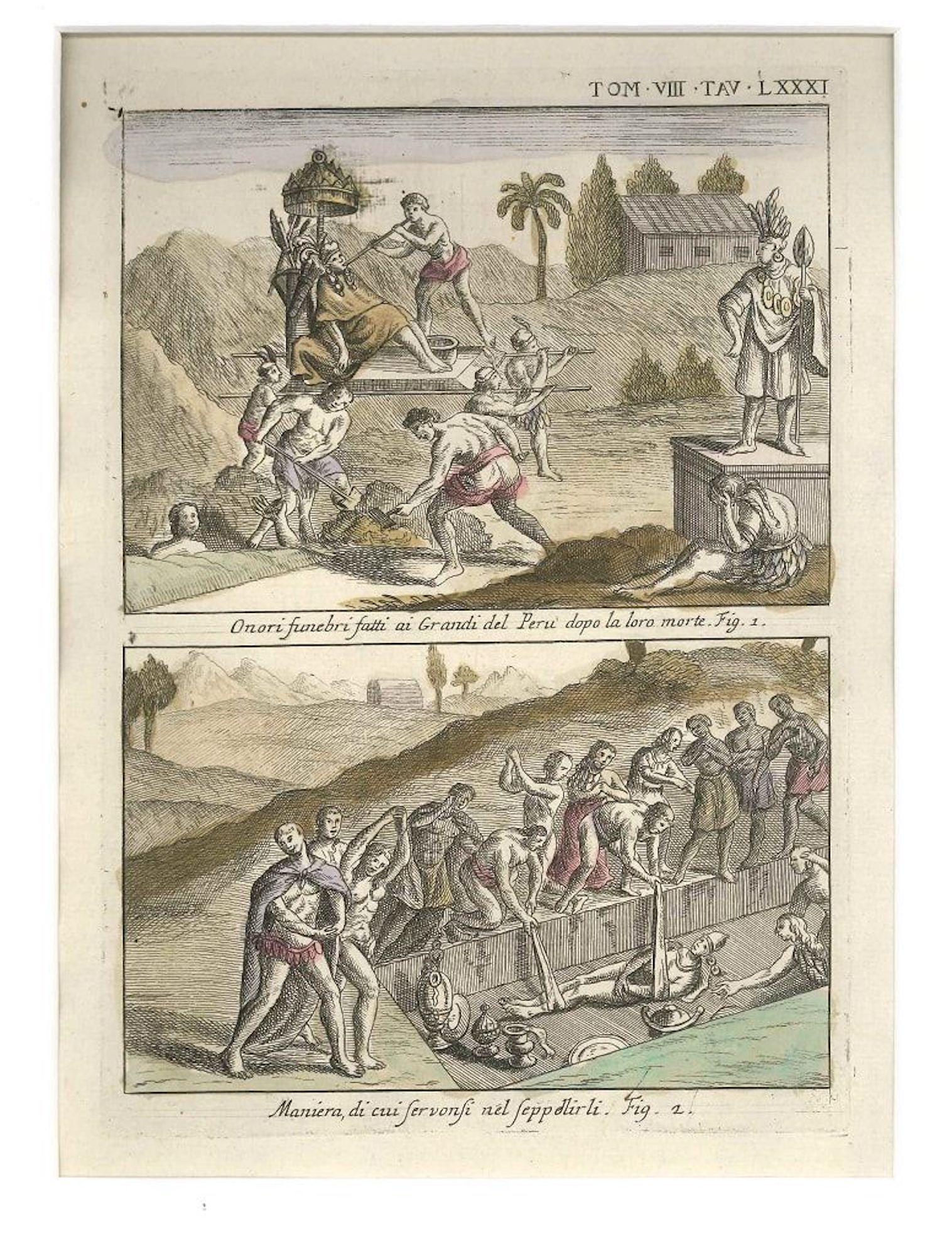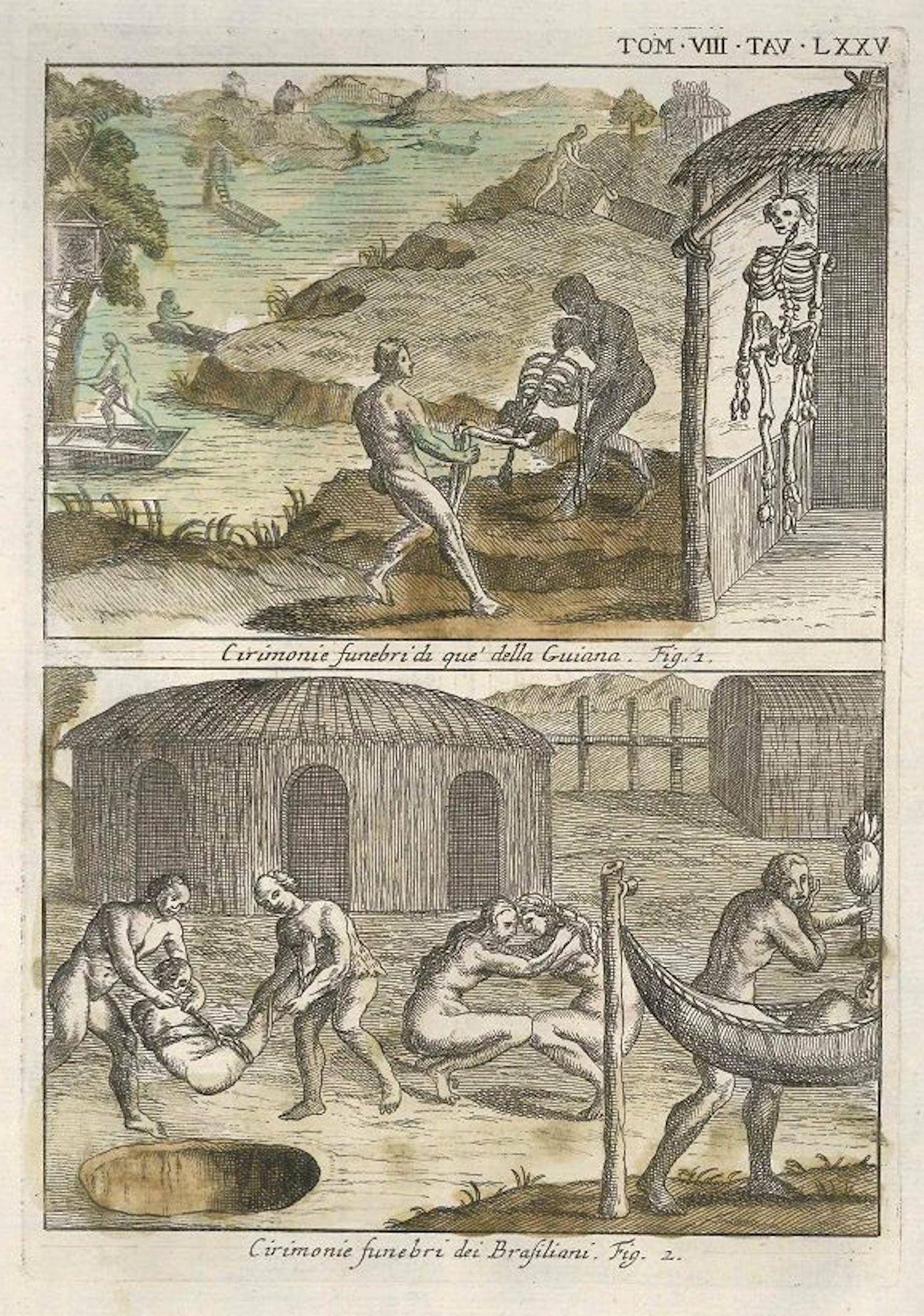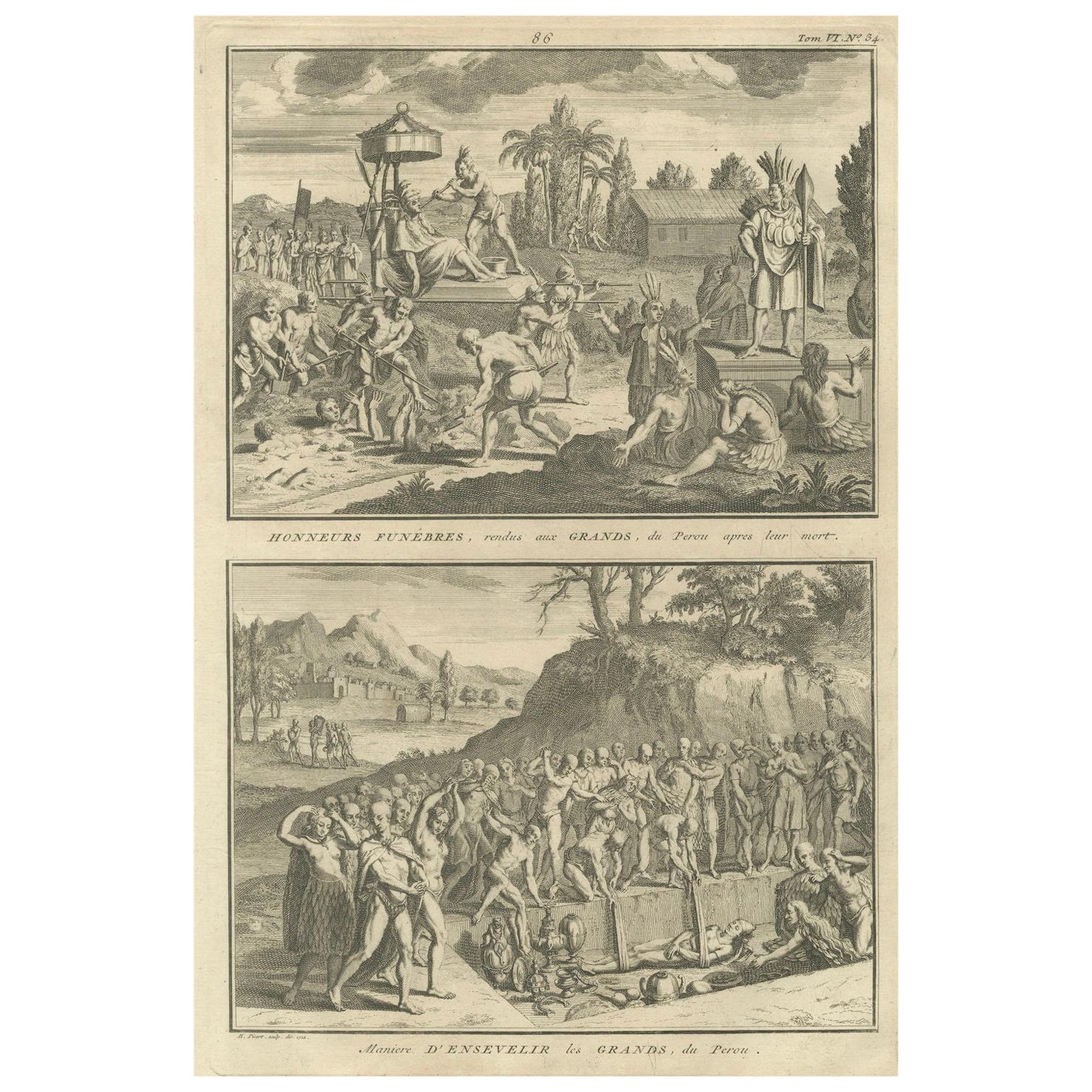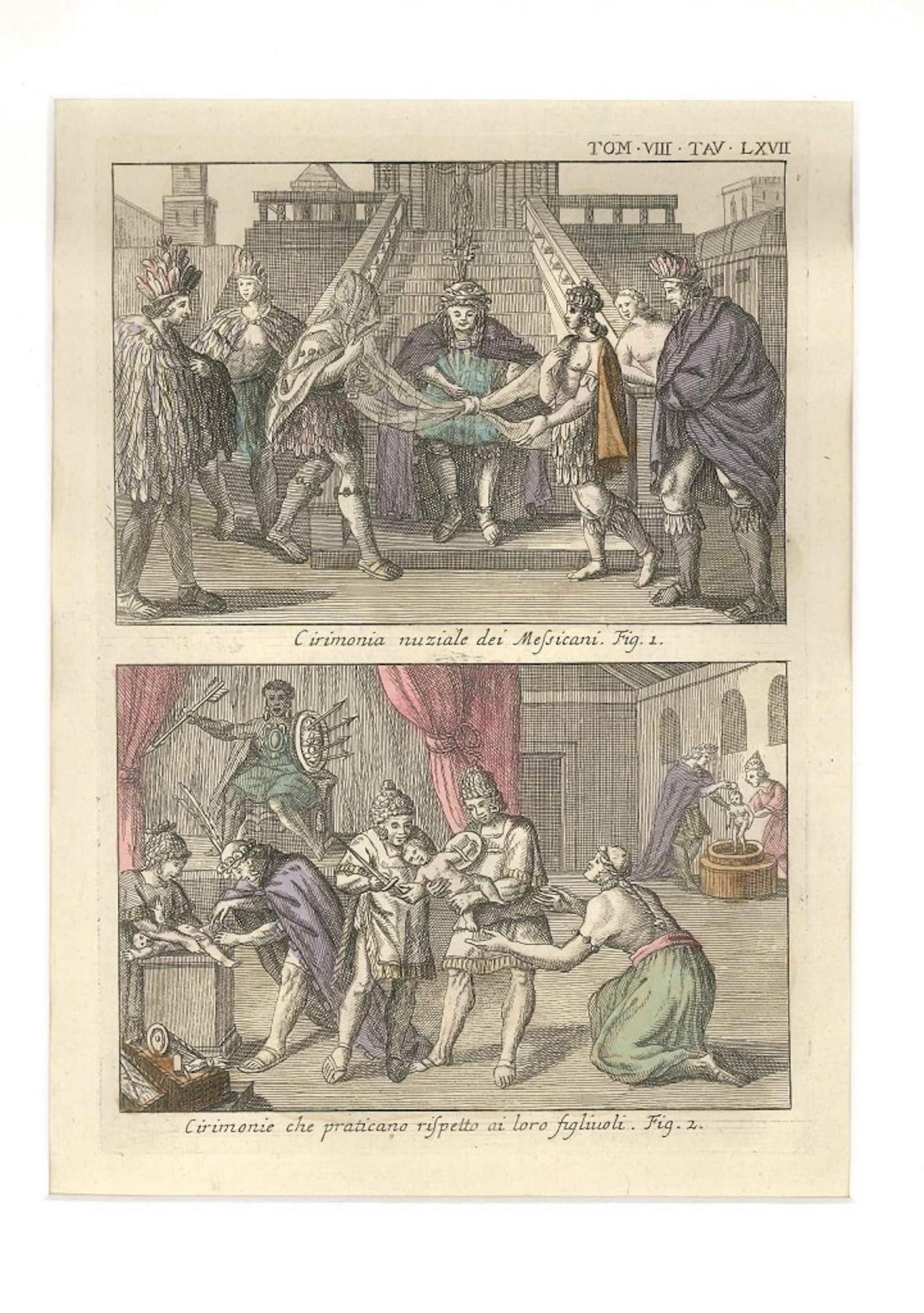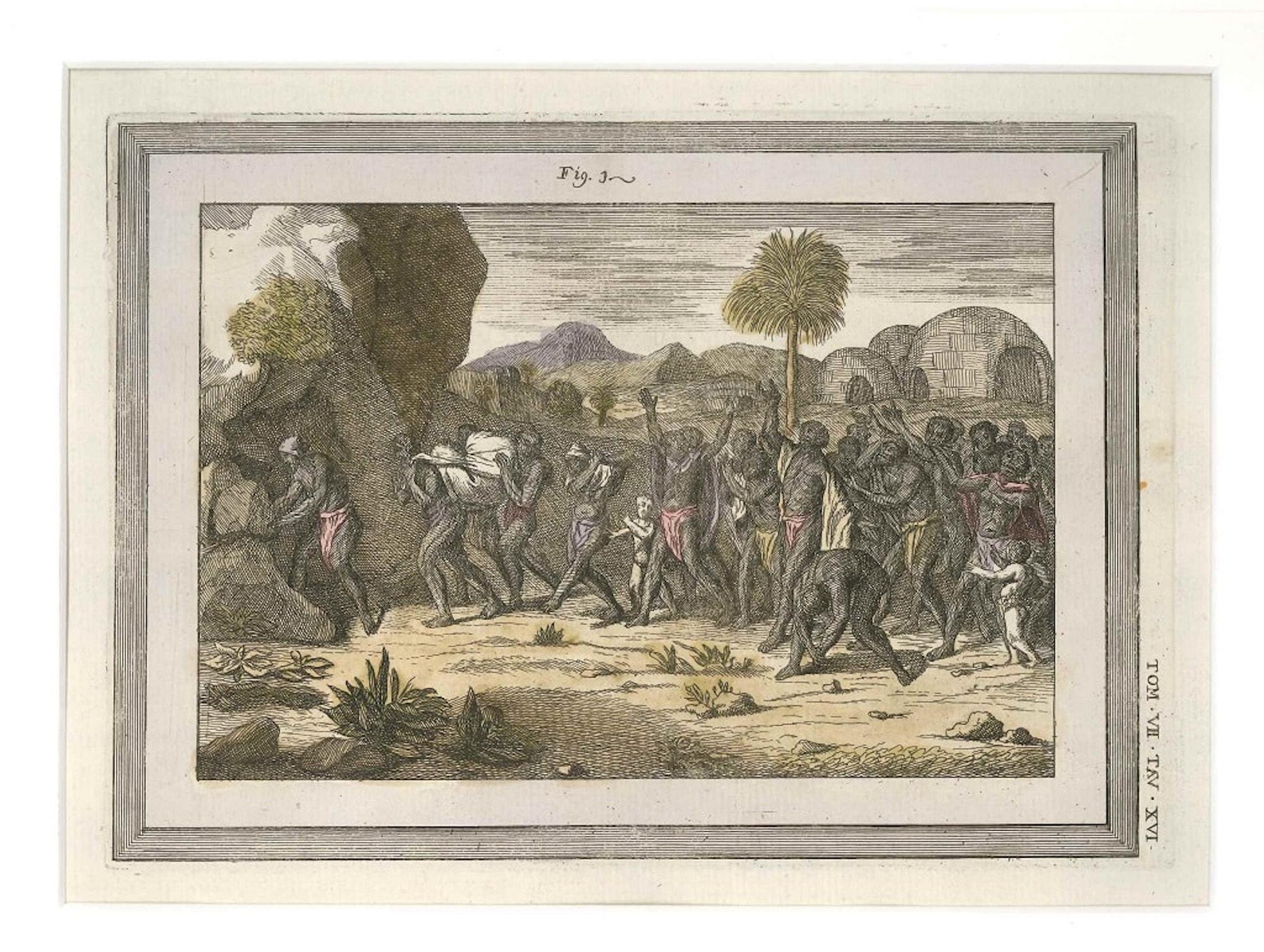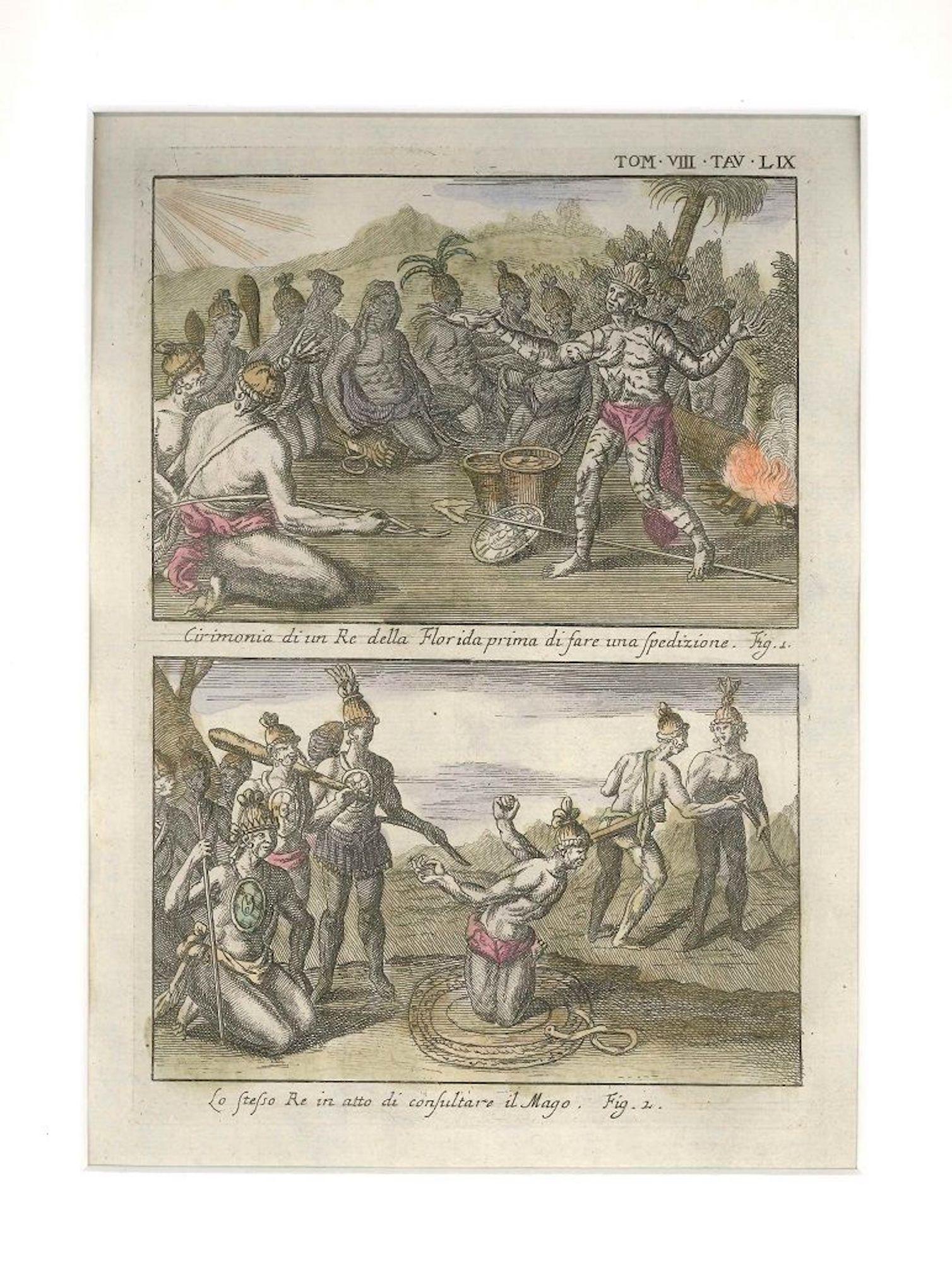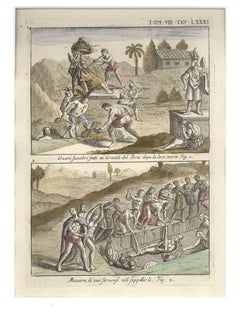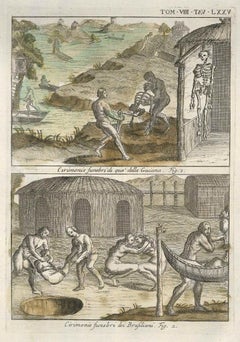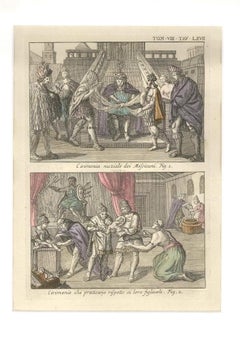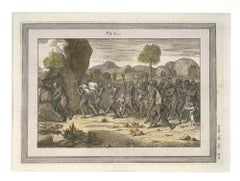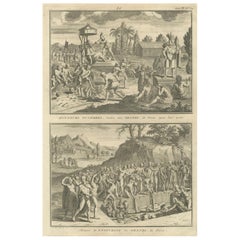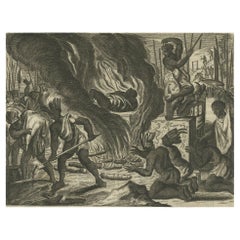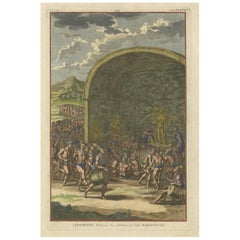Items Similar to Funeral Ceremonies among the Mexicans and Venezuelans - by G. Pivati - 1746/1751
Want more images or videos?
Request additional images or videos from the seller
1 of 2
Gianfrancesco PivatiFuneral Ceremonies among the Mexicans and Venezuelans - by G. Pivati - 1746/17511746-1751
1746-1751
$358.27
£264.93
€300
CA$492.12
A$547.21
CHF 286.48
MX$6,684.33
NOK 3,599.86
SEK 3,386.39
DKK 2,284.27
About the Item
Image dimensions: 25.5 x 18 cm.
Funeral Ceremonies among the Mexicans and Venezuelans is a fine etching, hand-watercolored, realized by the engraver Gianfrancesco Pivati.
This original print, representing the funeral ceremonies among the Mexicans and Venezuelans (the exhibition of the corpse, the funeral procession with presents, the cremation, and the antique rite of the cremains of the cacique), is from the series New Scientific and Curious Dictionary concerning the Sacred and the Profane, Tome VIII, Plate LXVIII, published by Benedetto Milocco in Venice in 1746-1751, concerning the Uses and Costumes, Religious Rites of people.
Perfect conditions, including passepartout (49 x 34 cm).
Gianfrancesco Pivati
Pivati's New Dictionary is a bold contribution to Italian cultural debate in the mid-18th century. The wide, useful, and interesting knowledge it contains is often taken from Hebrew, Greek, Latin, French, Spanish and English, as well as Italian. “The subjects treated are well researched and generally presented in a simple, direct style (…)”. Pivati’s liberal voice was out of the chorus in the context of the rigid conformity predominating throughout the Italian peninsula. “He appears to be committed to Reason and Science as opposed to simple Faith, but he tries to avoid any direct challenge to the dogmatic teachings of the Church”.
Reference: Silvano Garafalo, in: Frank Kafker, Notable Encyclopedias, Oxford 1981.
- Creator:Gianfrancesco Pivati (1680 - 1784, Italian)
- Creation Year:1746-1751
- Dimensions:Height: 14.77 in (37.5 cm)Width: 9.38 in (23.8 cm)Depth: 0.04 in (1 mm)
- Medium:
- Movement & Style:
- Period:1740-1749
- Condition:Insurance may be requested by customers as additional service, contact us for more information.
- Gallery Location:Roma, IT
- Reference Number:Seller: M-947221stDibs: LU65034974342
About the Seller
4.9
Platinum Seller
Premium sellers with a 4.7+ rating and 24-hour response times
1stDibs seller since 2017
7,681 sales on 1stDibs
Typical response time: 3 hours
- ShippingRetrieving quote...Shipping from: Monaco, Monaco
- Return Policy
Authenticity Guarantee
In the unlikely event there’s an issue with an item’s authenticity, contact us within 1 year for a full refund. DetailsMoney-Back Guarantee
If your item is not as described, is damaged in transit, or does not arrive, contact us within 7 days for a full refund. Details24-Hour Cancellation
You have a 24-hour grace period in which to reconsider your purchase, with no questions asked.Vetted Professional Sellers
Our world-class sellers must adhere to strict standards for service and quality, maintaining the integrity of our listings.Price-Match Guarantee
If you find that a seller listed the same item for a lower price elsewhere, we’ll match it.Trusted Global Delivery
Our best-in-class carrier network provides specialized shipping options worldwide, including custom delivery.More From This Seller
View AllFuneral Honours and Burial of the Peruvian Leaders - by G. Pivati - 1746-1751
By Gianfrancesco Pivati
Located in Roma, IT
Funeral Honours and Burial of the Peruvian leaders is a fine etching, hand-watercolored, realized by the engraver Gianfrancesco Pivati.
This original print, representing the funera...
Category
1740s Old Masters Figurative Prints
Materials
Etching
Funeral Ceremonies of American natives of Guiana and Brasil - 1746-1751
By Gianfrancesco Pivati
Located in Roma, IT
Funeral Ceremonies of natives of Guiana- Funeral Ceremonies of Brasilian indigenouses
Etchings, Hand-Watercoloured. Vol. VIII, Plate LXXV
Image Dim: cm 25.5 x 18; Sheet Dim: cm 37.5 x 23.8; Passepartout Dim: cm 49 x 34
Very Interesting Etchings ( two pictures in the same matrix), Hand-watercoloured, showing typical Funeral Cerimonies of American natives...
Category
1740s Old Masters Figurative Prints
Materials
Etching
Nuptial Ceremony and Birth among the Mexicans - by G. Pivati - 1746-1751
By Gianfrancesco Pivati
Located in Roma, IT
Nuptial Ceremony and Birth among the Mexicans
Etchings, Hand-Watercoloured. Tom.VIII, Plate LXVII
Image Dim: cm 25.5 x 18; Sheet Dim: cm 37.5 x 23.8; Passepartout Dim: cm 49 x 34
...
Category
1740s Old Masters Figurative Prints
Materials
Etching
Funeral Procession among the Indigenouses - by G. Pivati - 1746-1751
By Gianfrancesco Pivati
Located in Roma, IT
Funeral Procession among the indigenouses - From “New Scientific and Curious Dictionnary concerning the Sacred and the Profane
Etchings, Hand-Water...
Category
1740s Old Masters Figurative Prints
Materials
Etching
Ceremonies of a Floridian King - Etching by G. Pivati - 1746-1751
By Gianfrancesco Pivati
Located in Roma, IT
Image dimensions: 25.5 x 18 cm.
Ceremonies of a Floridian King is a fine etching, hand-watercolored, realized by the engraver Gianfrancesco Pivati.
This original print, representi...
Category
1740s Old Masters Figurative Prints
Materials
Etching
The Wedding among the Indians of Panama - Etching by G. Pivati - 1746/1751
By Gianfrancesco Pivati
Located in Roma, IT
Image dimensions: 25.5 x 18 cm.
Wedding among the Indians of Panama; Relatives and friends tilling the couple's soil is a fine etching, hand-watercolored, realized by the engraver G...
Category
1740s Old Masters Figurative Prints
Materials
Etching
You May Also Like
Funeral Rites and Burial of Inca Nobles – 1734 Engraving of Old Peruvian Customa
Located in Langweer, NL
Title: Funeral Rites and Burial of Inca Nobles – Rare 1734 Engraving of Peruvian Customs
Description: This detailed 1734 copperplate engraving presents two dramatic scenes depicting...
Category
Antique 1730s Prints
Materials
Paper
Funeral Ceremonies of the Orinoco and Brazilian Indigenous Peoples, 1734
Located in Langweer, NL
Title:
Funeral Ceremonies of the Orinoco and Brazilian Indigenous Peoples, 1734
Description:
This striking copperplate engraving, published in 1734 in Bernard Picart’s monumental *C...
Category
Antique 1730s Prints
Materials
Paper
Engraving of Rituals and Cremation Ceremonies in New Spain by Montanus, 1673
Located in Langweer, NL
Title: "Rituals and Ceremonies in New Spain"
Description: This striking copper engraving is extracted from Arnoldus Montanus' seminal work, "Die Unbekannte Neue Welt oder Beschreibu...
Category
Antique 1670s Prints
Materials
Paper
$429 Sale Price
20% Off
Religious Ceremony of the Inhabitants of the Island of Hispaniola, 1734
Located in Langweer, NL
Religious Ceremony of the Inhabitants of the Island of Hispaniola, 1734
Description:
This vividly hand-colored copperplate engraving, issued in 1734 in Bernard Picart’s monumental w...
Category
Antique 1730s Prints
Materials
Paper
Mexican Marriage and Childhood Ceremonies as Imagined in the 18th Century, 1734
Located in Langweer, NL
Title: Marriage and Infant Rituals among the Mexicans, Engraving from 1734
Description: This richly detailed 18th-century copperplate engraving, published in 1723, offers a fascinat...
Category
Antique 1730s Prints
Materials
Paper
Antique Print of Funeral Ceremonies of the Canadian People by B. Picart, 1723
Located in Langweer, NL
Two images on one sheet. The first image shows the festivities of Canadian people while the deceased is carried to a Cabin. The second image shows a funeral procession.
This print...
Category
Antique Early 18th Century Prints
Materials
Paper
$119 Sale Price
20% Off
More Ways To Browse
Mexico Religious
Antique Mexican Plates
Funeral Procession
Antique Greek Costume
Antique Mexican Religious
Tea Room Depression Glass
Ted Fuller
Thomas Rowlandson Engraving
Tracey Emin Heart
Vintage Circus Props
Vintage Clinton Watch
Walter Dendy
Albert Arthur Allen
Alex Katz Dancer 2
Andy Warhol Ticket
Auguste Delatre
Botero Poster
Braniff Poster
